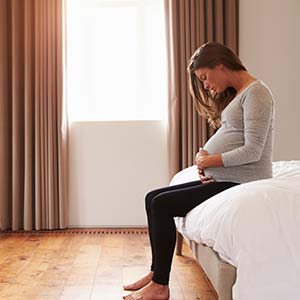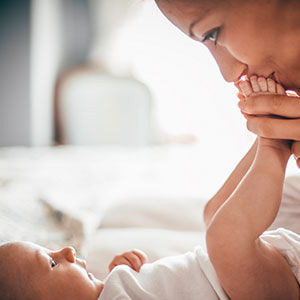Congratulations, you’re pregnant! After the excitement settles down, it’s time for some planning. One of the most important decisions to make is how you would like to give birth. Perhaps some new mothers in your neighborhood or social circle have chosen a C-section (or Cesarean birth) over natural childbirth. It may sound tempting, but increasingly, the evidence weighs against it.
Some women choose a C-section because of the convenience factor of knowing their delivery date. They may also assume that it’s less painful, though this is not always the case.
However, the risks and downsides of an elective C-section — particularly for women who may want to have more children in the future — tend to outweigh the other factors.
That’s why many medical organizations, including the American College of Obstetricians and Gynecologists, recommend vaginal birth unless it would put the health of the mother or baby at risk. They also caution that concern about pain management is never a sufficient reason for a C-section.
Reasons for C-sections
Occasionally, C-sections are medically necessary. Of the approximately one-third of American women who deliver their babies through a C-section, the majority do so because their doctor deemed a vaginal birth a risk to mother or child.
Another reason women have C-sections is age. Women over 40 have an increased risk of complications during vaginal birth. In addition, waiting until later in life to have children may also increase the need for fertility treatments, which can raise the chance of conceiving twins. And that, in turn, makes a C-section delivery more necessary.
Elective C-sections risks
Elective C-sections have downsides, especially for women who plan on having another child, as each C-section increases the risk for complications in future pregnancies. C-sections also increase the risk that your uterus will rupture during a vaginal delivery, so it is highly likely that your doctor will recommend that all further deliveries be a C-section.
A C-section can cause complications and inconveniences after giving birth, too. For example, women who deliver vaginally go home sooner after delivery than women who have a C-section. After a C-section, your doctor may limit your physical activity for several weeks. The pain from your incision can make it uncomfortable to breastfeed. Finally, studies show that you have a significantly higher risk of needing to go back into the hospital with complications.
C-sections and your baby
A C-section can impact your baby as well. Babies born by planned C-sections are more likely to end up in the neonatal intensive care unit with breathing problems than babies who are born vaginally.
Bottom line: If your pregnancy is healthy and you’re planning to have more children later, the medical community recommends it’s best to have your baby through vaginal birth unless there are medical reasons to have a C-section. Be sure to talk to your obstetrician and gynecologist about the pros and cons before making a decision.
Recommended Reading
• http://www.who.int/mediacentre/news/releases/2015/caesarean-sections/en/
• http://www.acog.org/Resources-And-Publications/Committee-Opinions/Committee-on-Obstetric-Practice/Cesarean-Delivery-on-Maternal-Request
• https://www.ncbi.nlm.nih.gov/pmc/articles/PMC2947574/http://opinionator.blogs.nytimes.com/2016/01/19/arsdarian-cutting-the-number-of-c-section-births/http://www.webmd.com/baby/features/the-truth-about-c-sections#1
• http://www.cdc.gov/nchs/fastats/delivery.htmhttps://www.ncbi.nlm.nih.gov/pmc/articles/PMC1422801/http://www.cdc.gov/nchs/products/databriefs/db35.htm




